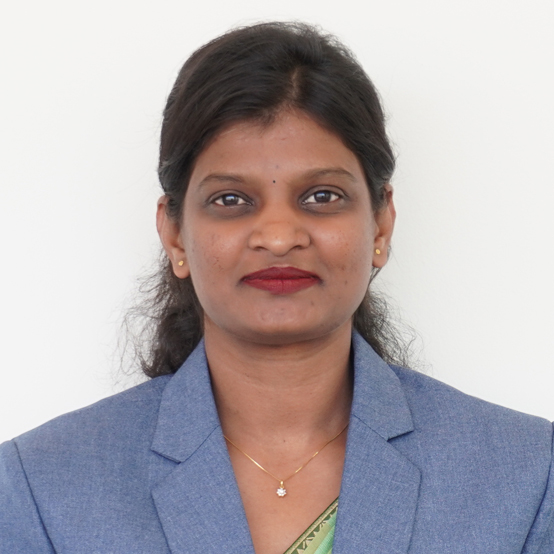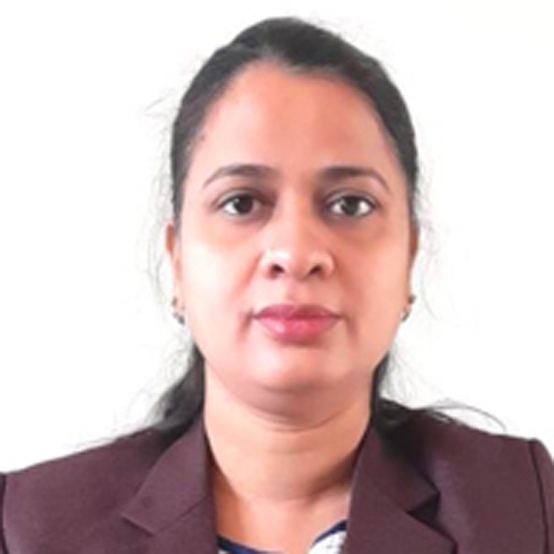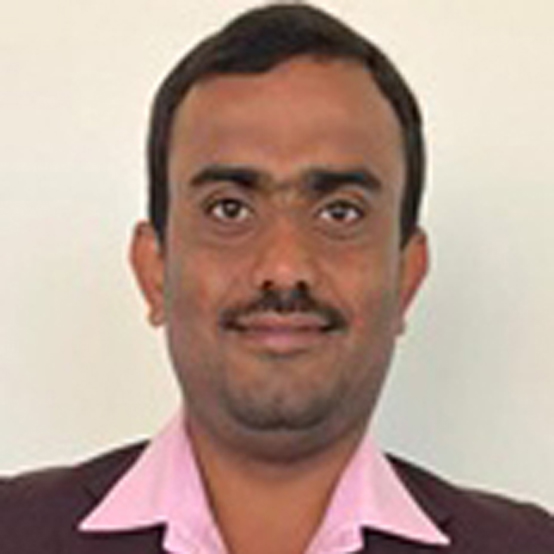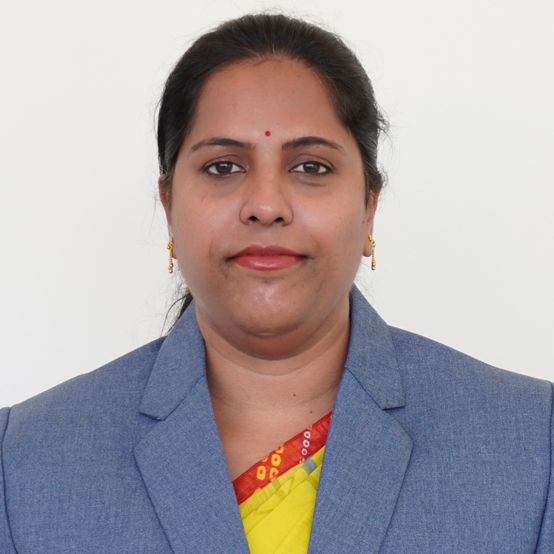Approved by AICTE, Recognised by Govt. and Affiliated to VTU, Accredited ‘A’ level by NAAC.
Dwarakanagar,Bagalur Main Road, Yelahanka, Bangalore-560063
Approved by AICTE, Recognised by Govt. and Affiliated to VTU, Accredited ‘A’ level by NAAC.
Dwarakanagar,Bagalur Main Road, Yelahanka, Bangalore-560063
The department has evolved over the years to portray its excellent academic performance.The department has dedicated and qualified faculties who are responsible to prepare students technically, morally and ethically. Computing facilities in the department provides teaching and research needs for students and faculties . All systems are upgraded to the latest configuration with campus wide internet connectivity.
Regular technical talks, seminars and workshops are being conducted for both faculties and students. Internship opportunities are provided for final year and pre-final year students to carry out projects. The department has a prestigious alumni list who are entrepreneurs, have scored very high ranks in public service examinations and CAT exams, secured admission in prestigious institutes of higher studies, as well as holding senior positions in reputed private, government and multinational corporations.
Year of Establishment: 2008
Current Intake: 60
Why Information Science & Engineering?
Information Science is virtually a science of science and combines with so many gradients and domain such as Computer Science, Information Technology, Cognitive Science, and Social Science and so on. Information Science is one of the important and valuable domains for overall Information Infrastructure building. It is primarily concerned with the analysis, collection, classification, manipulation, storage, retrieval, movement, dissemination, and protection of information. It is creating ample opportunities for candidates, improving the different processes and procedures, and further enriching our lives. The majority of career tracks in IT entail design and operational tasks related to computer hardware components, networks and software applications.
Career path proposed through Information Science Engineering
Data Science Engineers
Network Engineers
Software Development Engineers
Advanced Artificial Intelligence
Scope for Higher Studies
To create conductive environment for quality education and expertize the students in globalized technologies.
To provide conducive academic environment with intellectual capabilities.
To Instill skill development in emerging technologies.
To impact professional responsibilities and commitments ethical standards and social concerns.
|
PO 1 |
Engineering knowledge : Apply the knowledge of mathematics, science, engineering fundamentals, and an engineering specialisation to the solution of complex engineering problems. |
|
PO 2 |
Problem analysis : Identify, formulate, research literature, and analyse complex engineering problems reaching substantiated conclusions using first principles of mathematics, natural sciences, and engineering sciences. |
|
PO 3 |
Design/development of solutions : Design solutions for complex engineering problems and design system components or processes that meet the specified needs with appropriate consideration for the public health and safety, and the cultural, societal, and environmental considerations. |
|
PO 4 |
Conduct investigations of complex problems : Use research-based knowledge and research methods including design of experiments, analysis and interpretation of data, and synthesis of the information to provide valid conclusions |
|
PO 5 |
Modern tool usage : Create, select, and apply appropriate techniques, resources, and modern engineering and IT tools including prediction and modelling to complex engineering activities with an understanding of the limitations. |
|
PO 6 |
The engineer and society : Apply reasoning informed by the contextual knowledge to assess societal, health, safety, legal, and cultural issues and the consequent responsibilities relevant to the professional engineering practice. |
|
PO 7 |
Environment and sustainability : Understand the impact of the professional engineering solutions in societal and environmental contexts, and demonstrate the knowledge of need for sustainable development. |
|
PO 8 |
Ethics : Apply ethical principles and commit to professional ethics and responsibilities and norms of the engineering practice. |
|
PO 9 |
Individual and team work : Function effectively as an individual, and as a member or leader in diverse teams, and in multidisciplinary settings. |
|
PO 10 |
Communication : Communicate effectively on complex engineering activities with the engineering community and with society at large, such as, being able to comprehend and write effective reports and design documentation, make effective presentations, and give and receive clear instructions. |
|
PO 11 |
Project management and finance : Demonstrate knowledge and understanding of the engineering and management principles and apply these to one‘s own work, as a member and leader in a team, to manage projects and in multidisciplinary environments. |
|
PO 12 |
Life-long learning : Recognise the need for, and have the preparation and ability to engage in independent and life-long learning in the broadest context of technological change. |
At the end of the B.E Information Science & Engineering program, students are expected to have developed the following program specific outcomes.
PSO 1: Deep learning of contemporary issues in information Science, Analyse and develop strong technical Skills.
PSO 2: Possess practical competence in multi-disciplinary environment in the context of changing Technologies.
PSO 3: Discuss the logical solutions through the flowcharts, algorithms and pseudo code.
PSO 4: Explain the syntax, flow of the program and sub problems to obtain the programmatic solutions.
PSO 5: Inseminate Skills for successful carrier path for higher studies.
Realizing the importance of rapid advancements in the Computer Science & Information Technology sectors, all the laboratories have been furnished with high speed LAN. The labs are updated and upgraded frequently as per the requirements and demand of industry. The well-equipped laboratories help students to meet ever increasing technological and social challenges with its traditions of self-discipline, hard work and a creative approach to solve problematic issues.
3rd to 8th Semester BE – Information Science and Engineering Scheme of Teaching and Examinations
Outcome Based Education (OBE) and Choice Based Credit System (CBCS) (Effective from the academic year 2018 – 19)
General Criteria:
| Subject Code | Course Outcomes (CO’s) |
|---|---|
|
21MAT31 |
1. To solve ordinary differential equations using Laplace transform. |
|
21CS32 |
1. Identify different data structures and their applications. |
|
21CS33 |
1. Design and analyze application of analog circuits using photo devices, timer IC, power supply and regulator IC and op-amp. |
|
21CS34 |
1. Explain the organization and architecture of computer systems with machine instructions and programs |
|
21CSl35 |
1. Use Eclipse/NetBeans IDE to design, develop, debug Java Projects. |
|
21CSL381 |
1. Know the basics of computers and prepare documents, spreadsheets, make small presentations with audio, video and graphs and would be acquainted with internet. |
| Subject Code | Course Outcomes (CO’s) |
|---|---|
|
18MAT31 |
1.Use Laplace Transform and Inverse Laplace Transform in solving differential/integral equation arising in network analysis, control systems and other fields of engineering. |
|
18CS32 |
1.Use different types of data structures, operations and algorithms. . |
|
18CS33 |
1.Design and analyze application of analog circuits using photo devices, timer IC, power supply and regulator IC and op-amp. . |
|
18CS34 |
1.Explain the basic organization of a computer system. . |
|
18CS35 |
1.Design a software system, component, or process to meet desired needs within realistic constraints. . |
|
18CS36 |
1.Use propositional and predicate logic in knowledge representation and truth verification. . |
|
18CSL37 |
1.Use appropriate design equations / methods to design the given circuit. . |
|
18CSL38 |
1.Analyze and Compare various linear and non-linear data structures. |
|
18KVK28/39/49 |
At the end of the course, the student will be able to understand kannada and communicate in kannada language |
|
18CPC39/49 |
1.Describe and analyze role and salient features of the Indian Constitution. . |
|
18MAT41 |
1.Use the concepts of analytic function and complex potentials to solve the problems arising in electromagnetic field theory. . |
|
18CS42 |
1.Describe computational solution to well-known problems like searching, sorting etc. . |
|
18CS43 |
1.Demonstrate need for OS and different types of OS . |
|
18CS44 |
1.Describe the architectural features and instructions of ARM microcontroller . |
|
18CS45 |
1.Explain the object-oriented concepts and JAVA. . |
|
18CS46 |
1.Explain the various components of data communication. . |
|
18CSL47 |
1.Design algorithms using appropriate design techniques . |
|
18CSL48 |
1.Develop and test program using ARM7TDMI/LPC2148 . |
|
18CS51 |
1.Define management, organization, entrepreneur, planning, staffing, ERP and outline their importance in entrepreneurship. |
|
18CS52 |
1.Explain principles of application layer protocols. |
|
18CS53 |
1.Identify, analyze and define database objects, enforce integrity constraints on a database using RDBMS. |
|
18CS54 |
1.Acquire fundamental understanding of the core concepts in automata theory and Theory of Computation. |
|
18CS55 |
1.Demonstrate proficiency in handling of loops and creation of functions. |
|
18CS56 |
1.Explain Unix Architecture, File system and use of Basic Commands. |
|
18CSL57 |
1.Analyze and Compare various networking protocols. |
|
18CSL58 |
1.Create, Update and query on the database. . |
|
18CIV59 |
1.Understand the principles of ecology and environmental issues that apply to air, land, and water issues on a global scale. |
|
18IS61 |
1. Choose appropriate file structure for storage representation. |
|
18IS62 |
1. Derive test cases for any given problem. |
|
18CS63 |
1. Adapt HTML and CSS syntax and semantics to build web pages. |
|
18CS641 |
1.Identify data mining problems and implement the data warehouse . |
|
18CS642 |
1. Describe the concepts of object-oriented and basic class modelling. |
|
18CS643 |
1. Explain cloud computing, virtualization and classify services of cloud computing. |
|
18CS644 |
<1. Interpret the need for advanced Java concepts like enumerations and collections in developing modular and efficient programs. |
|
18IS645 |
1. Describe the role of information technology and information systems in business. |
|
18CS651 |
1.Create, test and debug Android application by setting up Android development environment. |
|
18CS652 |
1. Identify different data structures in C programming language. |
|
18CS653 |
1. Explain the object-oriented concepts and JAVA. |
|
18CS654 |
1. Explain the fundamentals of operating system. |
|
18ISL66 |
1. List out the requirements for the given problem. |
|
18ISL67 |
1. Implement operations related to files |
|
18CSMP68 |
1.Create, test and debug Android application by setting up Android development environment. |
|
18CS71 |
1.Appaise the theory of Artificial intelligence and Machine Learning. |
|
18CS72 |
1.Understand fundamentals of Big Data analytics. |
|
18CS731 |
1.Design and implement codes with higher performance and lower complexity . |
|
18CS732 |
1. Illustrate the key factors affecting performance of CSE applications. |
|
18CS733 |
1. Explain the concepts of parallel computing and hardware technologies. |
|
18CS734 |
Design the User Interface, design, menu creation, windows creation and connection between menus and windows. |
|
18CS741 |
1. Explain fundamentals of image processing. |
|
18CS742 |
1. Analyze the issues and challenges pertaining to management of emerging network technologies such as wired/wireless networks and high-speed internets. |
|
18CS743 |
1. Analyze the natural language text. |
|
18CS744 |
1.Define cryptography and its principles . |
|
18CS745 |
1. To understand Basic Programming concepts and the underlying logic/structure. |
|
18CS751 |
1. Explain the importance of data and data analysis.. |
|
18CS752 |
1. Examine Python syntax and semantics and be fluent in the use of Python flow control and functions.. |
|
18CS753 |
<1. Identify the AI based problems.. |
|
18CS754 |
1. Build applications on Visual Studio .NET platform by understanding the syntax and semantics of C#.. |
|
18CSL76 |
1.Implement and demonstrate AI and ML algorithms. |
|
18CS81 |
1. Interpret the impact and challenges posed by IoT networks leading to new architectural models. |
|
18CS821 |
1. Explain state of art techniques in wireless communication. |
|
18CS822 |
1.Identify key challenges in managing information and analyze different storage networking technologies and virtualization |
|
18CS823 |
1. Define, compare and use the four types of NoSQL Databases (Document-oriented, KeyValue Pairs, Column-oriented and Graph). |
|
18CS824 |
1. Identify the limitations of ILP and the need for multicore architectures. |

Associate Prof. & HoD

Assistant Professor

Assistant Professor

Assistant Professor

Assistant Professor

Assistant Professor